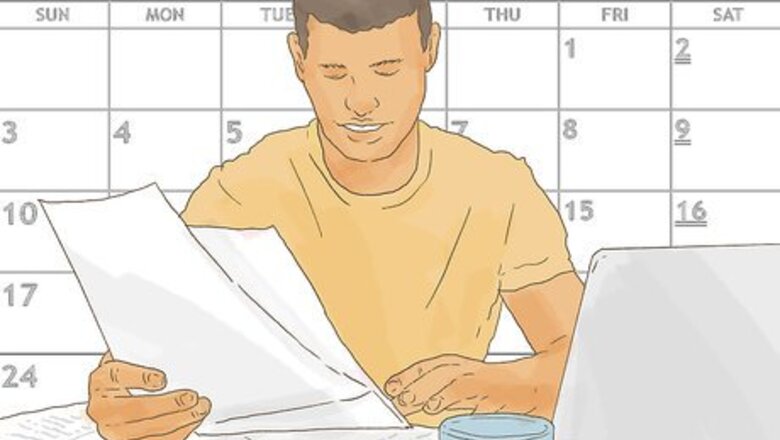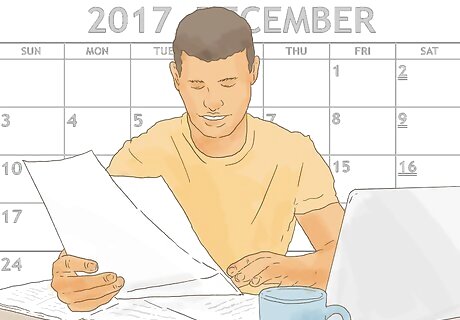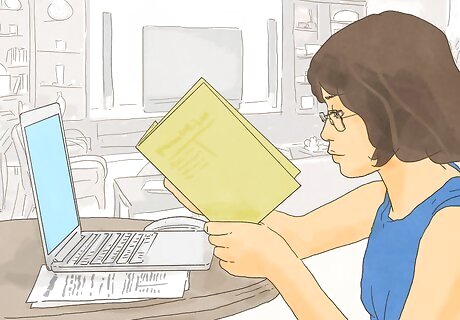
views
Studying for the Exam

Start studying several months in advance. With a failure rate between 80% and 90%, you'll want to study as much as you possibly can for the postal exam. Create a studying schedule well in advance and stick to it all the way until the day before your exam. If you've taken the exam before and failed, focus most of your studying efforts on those aspects of the exam that gave you difficulty on the first try.

Use an up-to-date study guide. Although you may be able to develop the proper test-taking skills and strategies on your own, you should use every possible advantage to counter the difficulty of the postal exam. Invest in a recent study guide for exam 473E that includes study strategies, information on exam content, and lots of practice exams. Guidebooks for the postal exam can be purchased from online retailers (e.g., Amazon.com) or in many brick-and-mortar bookstores (e.g., Barnes and Noble). Take advantage of the practice exams included in your study guide. The format of the postal exam can be particularly daunting for many people, and experiencing it in a stress-free environment will help you be less intimidated by it during the actual test.

Practice quickly discerning the differences between addresses. Part A of the exam will ask you to determine if two addresses are identical at a very fast speed. Spend some time quickly comparing similar addresses to determine whether they have any discrepancies between them. For instance, you might be asked to determine whether “123 Kalimazoo Road, Myrtle Beach, SC, 29577” and “123 Kalamazoo Road, Myrtle Beach, SC, 29577” are different. The questions in Part A will ask you whether the two addresses have different street addresses, different zip codes, different street addresses AND zip codes, or no differences. You will only have roughly 10 seconds to answer each question in Part A, so train yourself to spot all the differences between addresses in about this much time.

Familiarize yourself with forms used by the Postal Service. In Part B of the exam, you will be asked several questions about various USPS forms that will be shown to you. If you've never seen forms like these before, you may feel overwhelmed. Devote some time to studying commonly used postal forms and how to correctly fill them in. For example, look over the Domestic Claim or Registered Mail Inquiry form to get a sense of what sort of information is asked for on USPS forms and how it might be organized. The most difficult aspect of these questions may be dealing with ambiguous wording. Practice reading bureaucratic forms to understand how to input information precisely and correctly. Get used to looking to the fine print for guidance in understanding forms.

Train yourself to better memorize potential delivery routes. By far the hardest portion of the exam for most people is Part C, where you're asked to memorize the address range for various delivery routes and then sort addresses into their proper routes. To best this section, strengthen your memorization and recall skills. Since mail routes are combinations of numbers and letters, a technique you might try would be visualization. For example, if the 400 block of Jackson Boulevard was marked as Route A, you might visualize 400 Andrew Jacksons and say “400 Jacksons is A lot of people.” Focus specifically on being able to memorize particular numbers and street names together. For instance, a route may include 100-399 Johnson Ave, while 400-699 Johnson Ave may fall under a separate delivery route. Be sure you practice recalling names and numbers correctly. Any address that includes a misspelled street name needs to be marked as undeliverable rather than be categorized in the route it seems to belong to.

Take steps to improve your concentration and focus. The postal exam will throw a lot of questions at you in a short amount of time, so it will help to have a good sense of concentration. Do daily activities in the months leading up to the exam to improve your “focus stamina” and get better at concentrating. For example, when you're not studying, spend at least 30 minutes each day reading. During that 30 minutes, only focus on reading and don't allow your mind to wander. Block out all distractions while you're reading. You can also trying meditation to improve your concentration skills.
Taking the Test

Get plenty of rest and show up on time for the exam. You shouldn't try to study on the day of the test itself. Instead, get a full night's sleep the night before and give yourself plenty of time in the morning so you don't arrive late to the testing center. Eat a hearty breakfast that will give you sufficient energy; taking the test will take you well over 2 hours.

Stay calm and focused during the exam. Although the test has a reputation for being difficult, remind yourself that you have studied very specifically for the exam and are well equipped to pass it. Keep your mind focused on each individual question as you take the exam and don't let it wander. Remember, several portions of the exam require concentration and memorization in order to answer questions correctly.

Pace yourself accordingly for each section. The postal exam is rigorously timed, and you'll need to pace yourself in order to answer as many questions correctly as possible. Don't let yourself get hung up on individual questions; spend a limited amount of time on each question, then move on. You're allowed 11 minutes to answer 60 questions in Part A, meaning you'll have roughly 10 seconds for each question. You're allowed 15 minutes to answer 30 questions in Part B, giving you approximately 30 seconds for each question. Part C has 2 subsections of 6 and 7 minutes each, with 36 questions included in each section.

Be willing to guess in Part B. Although you are penalized in Parts A and C for wrong answers, no such penalty exists in Part B. Your overall score for this section is composed simply of all your correct answers. If you're stumped by a question in Part B, make an educated guess and then move on to the next question. In Parts A and C, ⅓ of incorrectly answered questions are subtracted from your score. Accuracy is much more important in these sections.

Answer questions quickly and honestly in Part D. Part D of the postal exam evaluates your personality, characteristics, and experiences as they relate to the job of working for the U.S. Postal Service. There are no right or wrong answers in this section, so don't feel stressed; answer each question honestly and in the allotted time. Don't try to answer the questions based on what you think the Postal Service “wants” you to say. Part D aims to ascertain whether you're a good fit for the job; if you answer misleadingly, you may end up in a position that isn't right for you. You're given 90 minutes to answer 236 questions in Part D. This leaves you between 20 and 30 seconds to answer each question. The questions in Part D are wide-ranging, and can include questions like “Do you like to work independently?”, “Do you carefully plan events in advance?”, or “What type of activities do you like the most?”



















Comments
0 comment